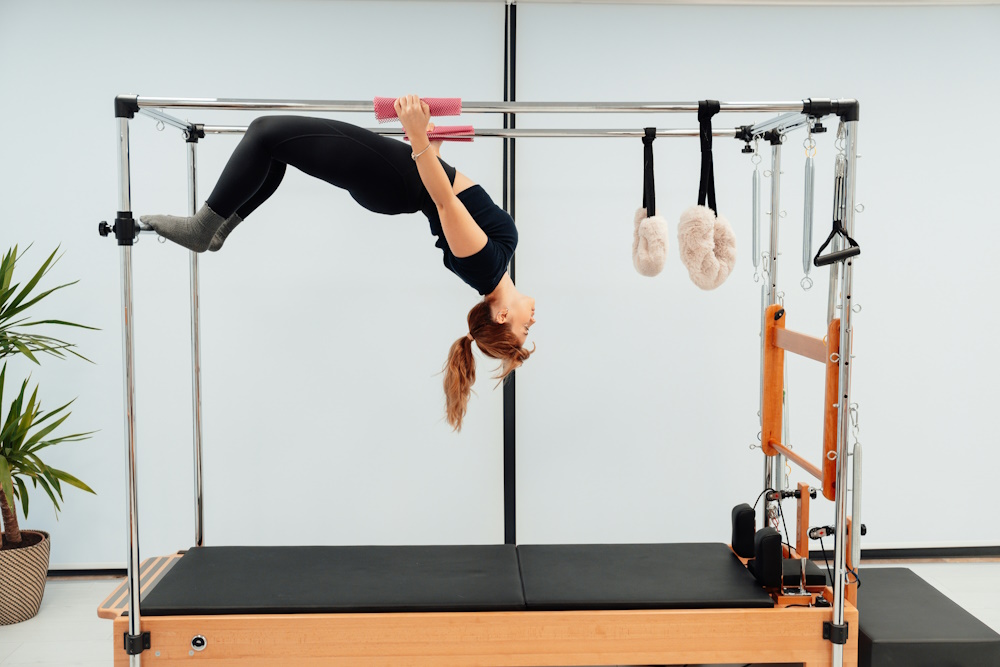Pilates is an exercise system that can be tailored to suit individuals of all fitness levels, from beginners to advanced practitioners. While Pilates offers an accessible entry point for newcomers, it also provides a wealth of challenging exercises for those looking to take their practice to the next level. In this guide, we will delve into advanced Pilates challenge exercises that can elevate your fitness journey.
How do you progress Pilates exercises?
Progressing in Pilates involves moving from simpler exercises to more challenging ones as your strength, flexibility, and control improve. Here are some ways to progress your Pilates practice:
1. Add Resistance: Introducing resistance in the form of resistance bands, weights, or springs on Pilates machines can make exercises more challenging.
2. Increase Repetitions: Gradually increase the number of repetitions you perform for each exercise to build endurance.
3. Modify the Range of Motion: Experiment with larger or smaller movements to increase the difficulty of an exercise.
4. Advance to More Complex Exercises: As you master foundational exercises, move on to more complex variations that target the same muscle groups.
5. Focus on Precision: Paying attention to precise movements and alignment can make even basic exercises more challenging.
6. Combine Movements: Combine multiple exercises into flowing sequences to challenge coordination and stamina.
What is the hardest Pilates exercise?
Determining the hardest Pilates exercise can be subjective as it varies from person to person based on their strengths and weaknesses. However, some exercises are widely considered advanced and challenging:
1. The Teaser: This exercise challenges core strength, balance, and flexibility as you lift your legs and upper body simultaneously while balancing on your tailbone.
2. The Control Balance: In this advanced exercise, you balance on your sacrum while lifting and extending your legs. It requires exceptional core control and stability.
3. The Snake/Twist: This exercise involves twisting your torso while balancing on your hands and feet. It demands both upper body and core strength.
4. The Hanging Pull-Up: Performed on specialized Pilates equipment, this exercise combines hanging from a bar with pull-up movements. It requires upper body strength and control.
5. The Russian Split: This advanced exercise combines leg splits with upper body movements. It challenges flexibility, balance, and strength.
How long does it take to advance in Pilates?
The time it takes to advance in Pilates varies widely depending on factors like your starting fitness level, consistency, and dedication to practice. Some people may progress to advanced exercises in a matter of months with regular practice, while others may take longer. It’s essential to listen to your body and progress at your own pace to prevent injury.
Which exercise is considered an advanced exercise in a Pilates mat class?
In a Pilates mat class, advanced exercises often involve a combination of strength, flexibility, and balance. The following are examples of advanced mat exercises:
1. Rolling Like a Ball: This exercise requires rolling backward and forward in a controlled manner while balancing on your tailbone.
2. The Boomerang: The Boomerang challenges coordination and core strength as you roll back and forth in a V-shape, balancing on your sit bones.
3. The Corkscrew: Involving a circular leg movement, this exercise demands core control and spinal flexibility.
4. The Jackknife: Advanced practitioners lift their bodies into a V-shape with legs extended overhead, requiring significant core strength and flexibility.
5. Control Balance: Similar to the advanced exercise mentioned earlier, this exercise is particularly challenging on a mat, as it requires balancing on your sacrum while extending your legs and torso.
In conclusion, advancing in Pilates is a personalized journey that depends on various factors, including your dedication, consistency, and individual fitness level. Progression involves modifying exercises, incorporating resistance, and gradually tackling more complex movements. While there are many challenging Pilates exercises, what’s important is finding the ones that suit your goals and continuously challenging yourself to grow in your practice.
